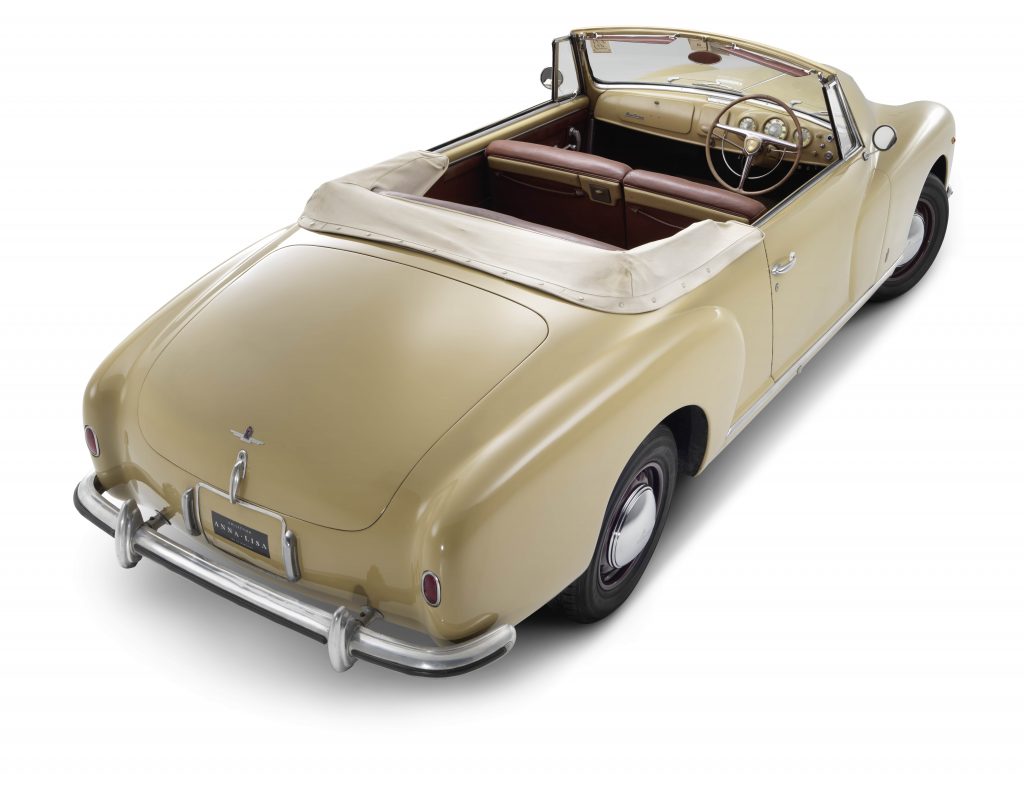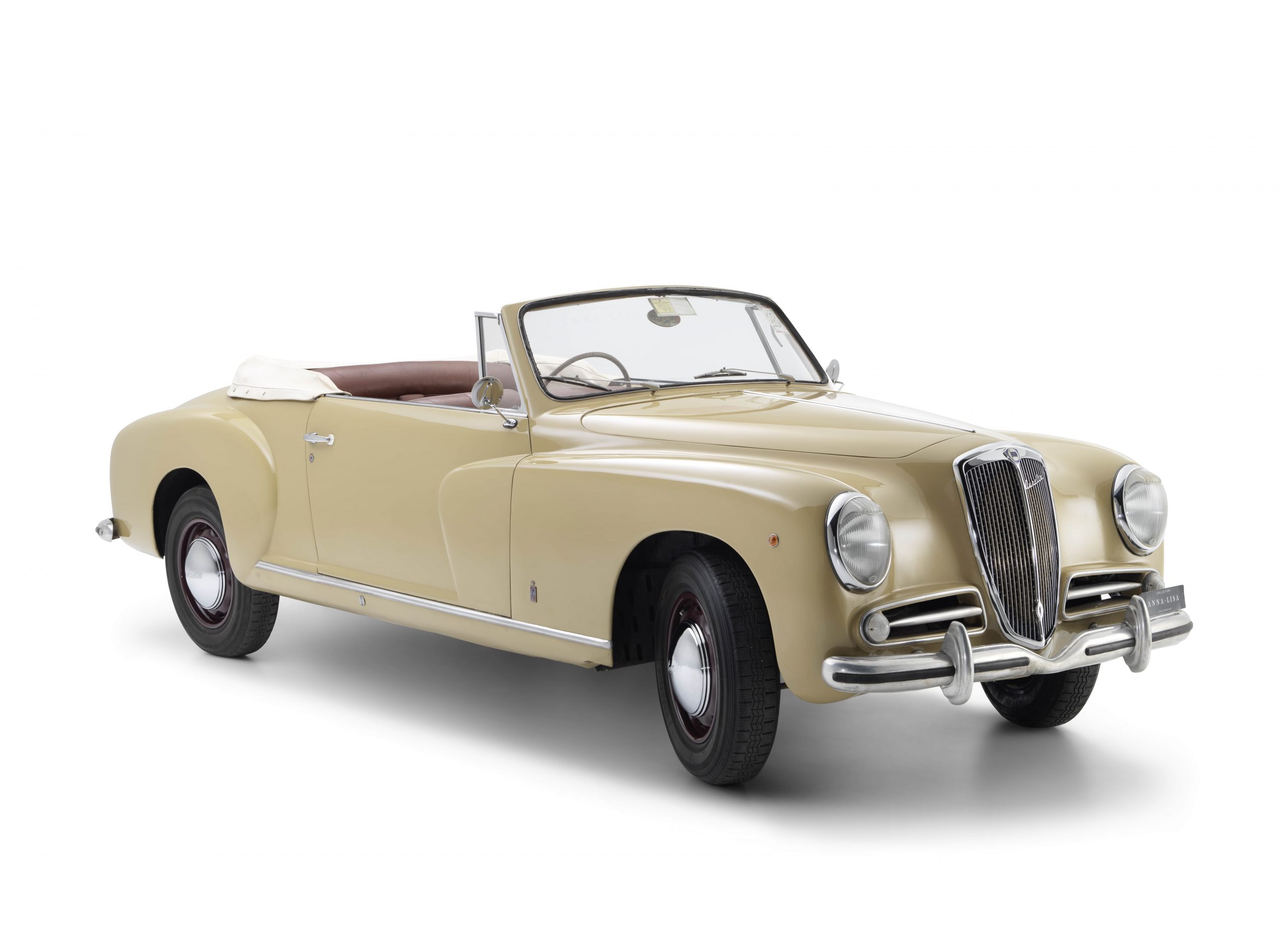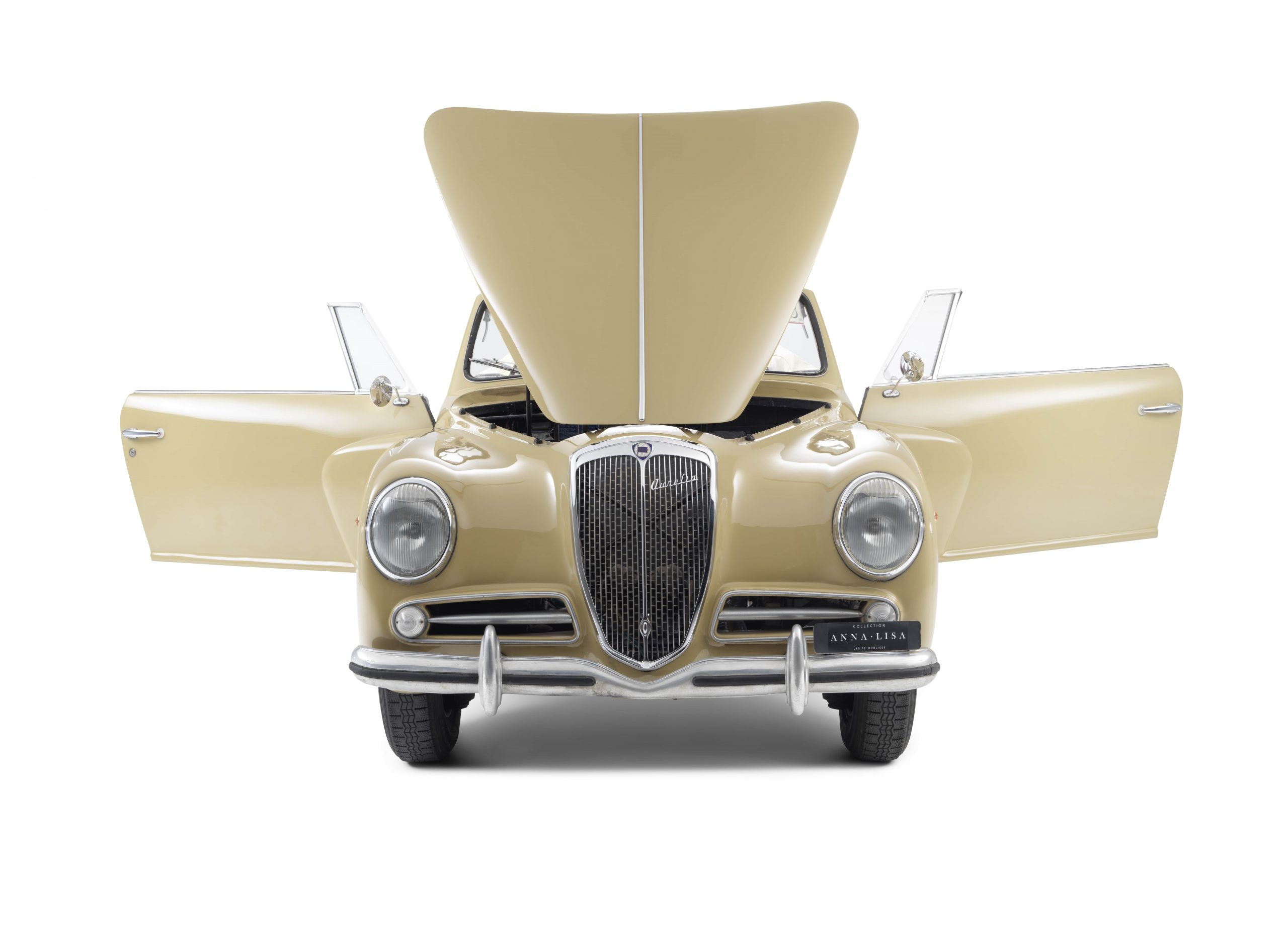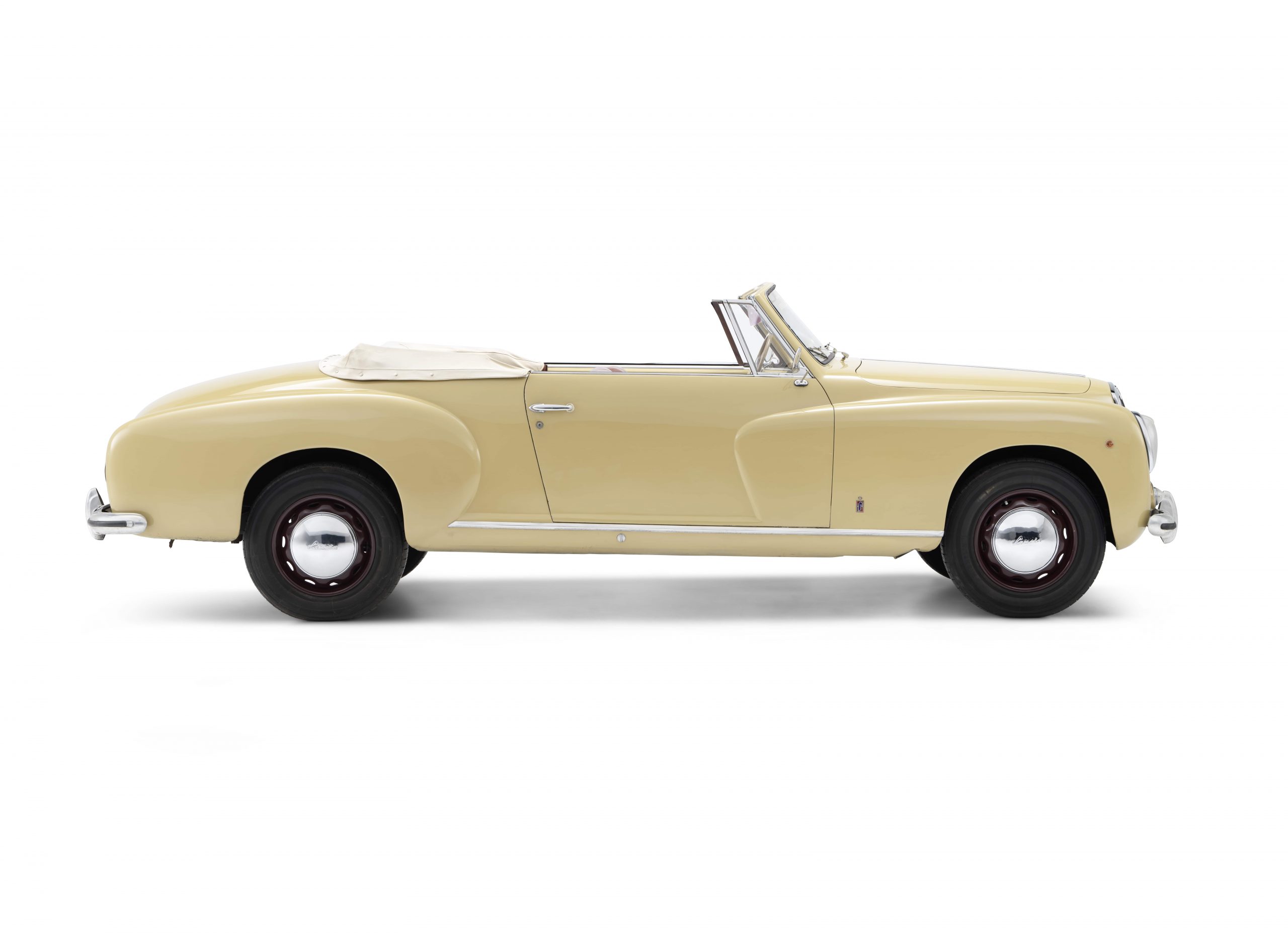Lancia Aurelia B50 Cabriolet Pinin Farina - 1951
— Subtle Italian elegance —- Model A rare car signed by Pinin Farina manufactured in only 265 units
- History Our unrestored car was sold new in Italy, it has had seven known owners before us. It comes with many period certificates and papers
- Mechanics The engine will be restarted and the brakes overhauled before being driven again
- Driving Sensations A great Lancia from the early 50’s, perfect for cruising
In most people’s mind, the Lancia Aurelia refers to the dolce vita, and mostly thanks to a famous picture: the one of Roger Vadim casually chatting with Brigitte Bardot from his Aurelia Spider B24S America in front of Senequier’s in Saint-Tropez. On a totally different note, another image that comes in mind to most people is the red Aurelia B20GT coupé driven at full speed in the Calculus Affair by Hergé. Of course, the Aurelia has a lot more to tell, thanks to its many racing successes, its technical innovations and its different designs.
The Lancia Aurelia , an iconic and refined Lancia.
Since its creation in 1908, Lancia has always been famous for its technical innovations, in particular those dedicated to high performance. It is all due to its founder’s passion for performance and technology. Indeed, Vincenzo Lancia had been a racing driver for five years before creating Lancia for which he was determined to innovate. Since then, the Turin-based brand has always distinguished itself by its technological refinement, a dedication that Gianni Lancia, Vincenzo’s son, set out to maintain after his father’s death in 1937.
Launched in 1950, the Lancia Aurelia, whose name came from the Roman road “Via Aurelia”, was no exception to the rule: it was filled with multiple innovations, especially its V6 engine or its radial tyres made by Michelin, both being world premieres.
Designed by Gianni Lancia and Vittorio Jano, the prolific and highly talented engineer, the Lancia Aurelia was revealed at the Turin Motor Show in 1950. The car was first sold in two versions: the B10 saloon equipped with five or six seats and the B50 cabriolet designed and built by the Turin based coachbuilder Pinin Farina. The cabriolet had a more refined interior with special leather and special instruments and lighting. In typical 50s design, it was also more generous with chrome.
Later on, Lancia launched other models under its own nomenclature in which “A” stood for large cars, “B” for medium models, “C” for small cars and “D” for the racing ones. Thus, the first two cars were named B10 and B50. Later on, both the coupe and cabriolet versions of the B20 and B24 made the Aurelia an icon seen in numerous movies.
With its discreet lines, its technological refinement and its rarity, as only 265 units have been manufactured between 1950 and 1952, this Lancia signed by Pinin Farina is truly a special car that speaks to the connoisseurs.
© Yann Geoffray Studio Grand Sud
The Aurelia B50 Pinin Farina Cabriolet , a made to order sophisticated car.
While the Lancia Aurelia B50 Pinin Farina started its career alongside the B10 Berlina with the same powertrain, it differed from the saloon in many aspects: first, it was built on an extended 114.6-inch wheelbase chassis, second, it came with various refinements that the more spartan saloon did not have.
The Aurelia Pinin Farina Cabriolet is a good symbol of the early Fifties, a period that saw the end of bespoke coachbuilders’ cars and the arising of production cars. Still made to order and hand-built by Pinin Farina, with personalised trimmings, the car was not yet a standard production car. There are actually no two cars alike, since every one of them differs from the others, either by having special accessories or even different engines, and for some of them a chassis based on the B52 Lancia.
A car with classic lines that hide cutting-edge technical innovations
In 1950, the Lancia Aurelia struck a chord with the public with its brand new engine designed by Vittorio Jano, a 1754 cc V-6 with overhead valves, built with an aluminium block and cylinder heads. What was then the World’s first production V6 engine developed 56 horsepower at 4,000 rpm.
The car’s suspension was also very innovative: it was independent at both ends – via sliding pillars at the front, and semi-trailing arms with coil springs at the rear. The rear-wheel drive car also had a rear-mounted four-speed gearbox with differential. Finally, the brakes were drum brakes, which tended to become the norm in 1950 before disk brakes would be launched later on. Another first was to equip the car with radial tyres made by Michelin.
A refined and pleasant car to drive
The Aurelia B50 bodywork is typical of the 1950s, imposing yet with a bit of lightness thanks to the use of chromes and a single-tone paint job. The straight grille is surrounded by well-integrated Marchal lights above the front air intakes. Last, the narrow bonnet at the front is particularly elegant, following the shape of the wings.
The interior is nicely finished with four brown leather real seats surrounded by refined equipment. It makes the atmosphere a real throwback to a glorious past thanks to the graphic dashboard, the ringed steering wheel, the chromed art deco dials, the green indicator lights and various chromed equipment. Another subtle refinement is the button you press to release the recessed loop handle.
The well-sprung car equipped with radial tyres is perfectly suited to cruising with a top speed of 120 km/h. Naturally, the driver still has to deal with period features, such as the drum brakes, which require attention. Finally, the lack of radio is compensated by the sound of the V6 engine and its single carburettor.
© Yann Geoffray Studio Grand Sud
The Aurelia B50 from the ANNA-LISA collection : quite a special car!
Even though it is not as famous or glamorous as the Aurelia B20GT or the B24 Spider America, the Aurelia B50 Pinin Farina cabriolet is still an endearing car because of its rarity, its discretion and its luxurious features. The car is clearly dated in the early 50s, which adds to its charm today.
With a superb ochre yellow colour and a rare colour combination with a brown interior, this special car immediately caught our eyes, especially as it was stored next to other contemporary Italian cars, in particular a 1952 Aurelia B22 saloon. The discovery of this unrestored car with its superb patina was a true moment of grace.
Acknowledgements –
Studio Grand Sud, Yann Geoffray Photography




